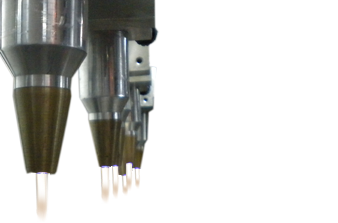Technical notes on Plasma Treatment System.
Technology, principles & applications.
Increasing surface tension of substrates through advanced technology
The process of increasing Surface Tension (dynes/cm) of a substrate by exposing it to an Atmospheric Plasma Flame is called Atmospheric Plasma Treatment. Non-contaminated, refrigerated dry, moisture free, and oil-free compressed air is passed through High Voltage at High Frequency. Air molecules get ionized and air reaches fourth stage of matter (Plasma), creating Atmospheric Plasma.
Principle
This treatment works on a simple principle that the Ion and the electron mixed in the Plasma Zone run against each other in High Speed on the surface of the material. This eliminates foreign matter (dust etc.) and helps the functional coating radical to stick on the surface. This process helps achieve a rinsing effect and Hydrophilic effect on the surface – resulting in increased Surface Tension.
Technology
The advanced technology of atmospheric plasma is accurate and accepted worldwide. A Plasma Flame is generated by using compressed natural air instead of other gases, making it an economical procedure. It is also far more superior and an ultimate replacement for the Hazardous and inefficient LPG Flame Treaters.
Applications
Automobile Industry
Head lights, door sealing profiles, decorative trim, switch components, control unit housings, bumpers.
Printing Industry
For inkjet Printing on bottles, caps, wires and cables, pipes, glass and other materials. For pad printing on pens, mobile covers, switches, switch boards etc.
Medical Devices
Dialysis machines, disposable syringes, catheter, ampoules, contact lenses, test tubes, petri dishes.
Glass Industry
Window seals, window frames, printing on drinking glasses and bottles, perfume flacons.
Coating
Foil coating, flocking, laminating.
Adhesive Technology
Plastic sheets, furniture coatings.
Laminating
Instrument panels, interior door coverings, car boot linings.
Extrusion
Signage, pipe extrusion, EPDM profile extrusion.

